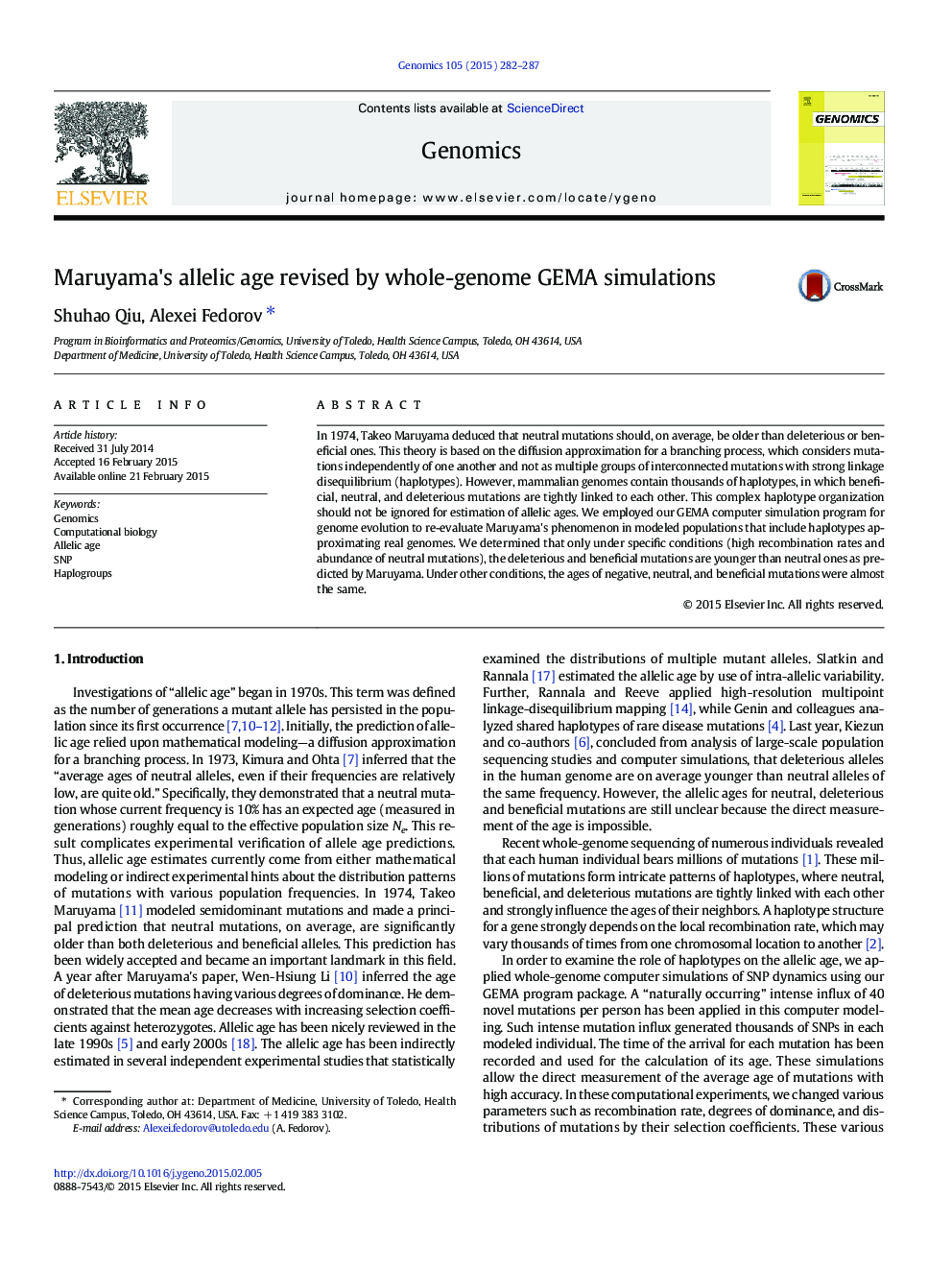| کد مقاله | کد نشریه | سال انتشار | مقاله انگلیسی | نسخه تمام متن |
|---|---|---|---|---|
| 5907845 | 1570099 | 2015 | 6 صفحه PDF | دانلود رایگان |
عنوان انگلیسی مقاله ISI
Maruyama's allelic age revised by whole-genome GEMA simulations
دانلود مقاله + سفارش ترجمه
دانلود مقاله ISI انگلیسی
رایگان برای ایرانیان
کلمات کلیدی
موضوعات مرتبط
علوم زیستی و بیوفناوری
بیوشیمی، ژنتیک و زیست شناسی مولکولی
ژنتیک
پیش نمایش صفحه اول مقاله

چکیده انگلیسی
In 1974, Takeo Maruyama deduced that neutral mutations should, on average, be older than deleterious or beneficial ones. This theory is based on the diffusion approximation for a branching process, which considers mutations independently of one another and not as multiple groups of interconnected mutations with strong linkage disequilibrium (haplotypes). However, mammalian genomes contain thousands of haplotypes, in which beneficial, neutral, and deleterious mutations are tightly linked to each other. This complex haplotype organization should not be ignored for estimation of allelic ages. We employed our GEMA computer simulation program for genome evolution to re-evaluate Maruyama's phenomenon in modeled populations that include haplotypes approximating real genomes. We determined that only under specific conditions (high recombination rates and abundance of neutral mutations), the deleterious and beneficial mutations are younger than neutral ones as predicted by Maruyama. Under other conditions, the ages of negative, neutral, and beneficial mutations were almost the same.
ناشر
Database: Elsevier - ScienceDirect (ساینس دایرکت)
Journal: Genomics - Volume 105, Issues 5â6, May 2015, Pages 282-287
Journal: Genomics - Volume 105, Issues 5â6, May 2015, Pages 282-287
نویسندگان
Shuhao Qiu, Alexei Fedorov,